
Identifying & Treating Common White Bugs in Succulent Plants
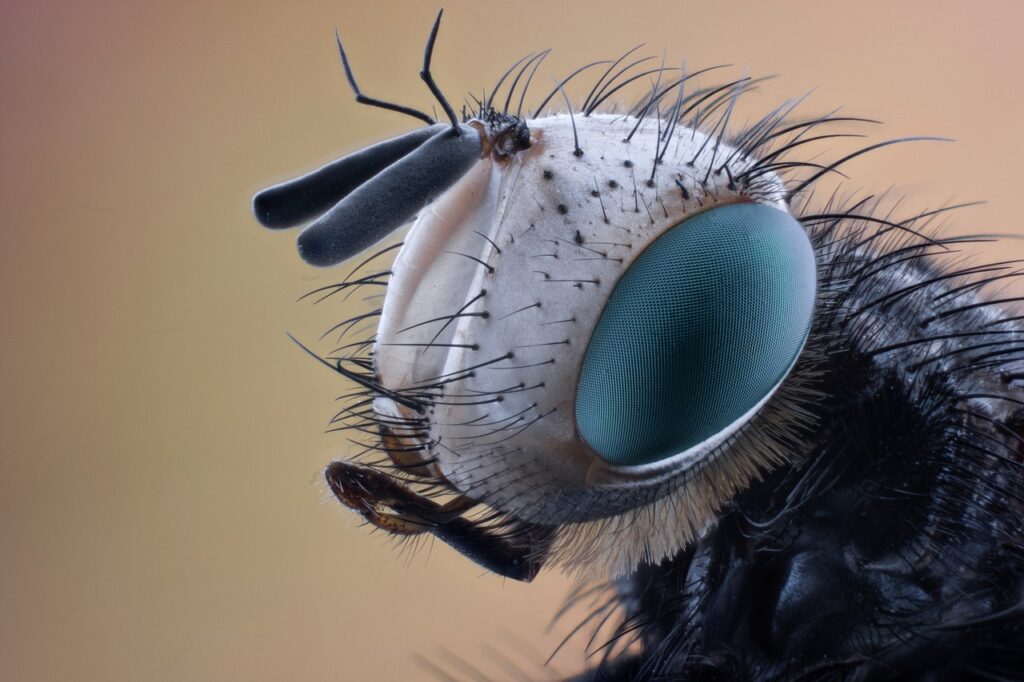
Succulent plants have become increasingly popular in recent years, thanks to their unique and eye-catching appearance. These plants have thick, fleshy leaves that allow them to store water, making them perfect for dry and arid environments. However, like any other plant, succulents are susceptible to various pests and diseases that can affect their health and overall appearance. One common pest that many succulent owners encounter are white bugs, which can cause damage to the plants if not addressed promptly.
We will delve into the world of white bugs in succulent plants, exploring the different types of pests that are often found on these plants and the damage they can cause. We will also discuss how to identify these pests, their life cycle, and the signs to look out for. Additionally, we will provide practical tips and recommendations for treating and preventing infestations, helping you keep your succulents healthy and thriving.
- Inspect your succulent plants regularly for any signs of white bugs
- If you notice white bugs on your succulent plants, isolate the affected plants to prevent further infestation
- Use a cotton swab dipped in rubbing alcohol to remove white bugs from your succulent plants
- Apply a natural insecticidal soap to your succulent plants to kill white bugs
- Consider introducing beneficial insects, such as ladybugs, to your succulent plants to control white bug populations
- Avoid overwatering your succulent plants, as this can create favorable conditions for white bugs to thrive
- Keep your succulent plants in a well-ventilated area to discourage white bug infestations
- Regularly clean and sterilize your gardening tools to prevent the spread of white bugs to your succulent plants
- Frequently Asked Questions
Inspect your succulent plants regularly for any signs of white bugs
Inspecting your succulent plants regularly is crucial for maintaining their health and preventing any infestations. One common issue that succulent plant owners face is the presence of white bugs. These pests can cause damage to your plants if left untreated, so it's important to identify and treat them as soon as possible.
Common Types of White Bugs in Succulent Plants
There are several types of white bugs that can infest your succulent plants. Here are some of the most common ones:
- Mealybugs: These small, soft-bodied insects are covered in a white, powdery substance. They often gather in clusters on the leaves, stems, and crevices of your succulents.
- Whiteflies: These tiny, white insects resemble small moths and are often found on the undersides of the leaves. They can quickly multiply and cause damage to the foliage of your succulents.
- Scale insects: Scale insects can vary in color, but some species appear white or light-colored. They attach themselves to the stems and leaves of your succulents and can cause stunted growth and yellowing of the plant.
Identifying White Bugs in Succulent Plants
Identifying the presence of white bugs on your succulent plants is essential for determining the appropriate treatment. Here are some signs to look out for:
- Visible bugs or eggs: Look closely at the leaves, stems, and crevices of your succulents. If you spot any small white insects or clusters of white eggs, it's likely an infestation.
- Sticky residue: Some white bugs, like whiteflies, excrete a sticky substance called honeydew. If you notice a sticky residue on your plants or nearby surfaces, it could be a sign of an infestation.
- Wilting or yellowing leaves: White bugs can cause damage to the foliage of your succulents, leading to wilting, yellowing, or browning of the leaves.
Treating White Bug Infestations
Once you've identified a white bug infestation in your succulent plants, it's crucial to take immediate action to prevent further damage. Here are some effective treatment methods:
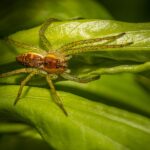 Are Tiny Bugs Harmful to Succulent Health?
Are Tiny Bugs Harmful to Succulent Health?- Manual removal: For smaller infestations, you can manually remove the bugs using a cotton swab dipped in rubbing alcohol. Gently dab the affected areas to eliminate the pests.
- Natural remedies: Some natural remedies like neem oil or insecticidal soap can help control white bug populations. Follow the instructions on the product label for safe and effective application.
- Isolation: If the infestation is severe, consider isolating the affected plants to prevent the bugs from spreading to other succulents.
- Professional help: In extreme cases, it may be necessary to seek professional assistance from a local pest control service specializing in succulent plants.
Remember, prevention is always better than cure. Regularly inspecting your succulent plants, maintaining good hygiene, and providing optimal growing conditions can help prevent white bug infestations and keep your plants healthy and thriving.
By taking immediate action and implementing appropriate treatment methods, you can effectively combat white bugs in your succulent plants and ensure their long-term well-being.
If you notice white bugs on your succulent plants, isolate the affected plants to prevent further infestation
If you notice white bugs on your succulent plants, it is important to take immediate action to prevent further infestation. These little pests can wreak havoc on your precious succulents if left untreated. In this article, we will discuss how to identify and treat the most common white bugs that can affect your succulent plants.
1. Mealybugs
Mealybugs are one of the most common white bugs that infest succulent plants. They are small, soft-bodied insects that resemble tiny cotton balls. You may notice them hiding in the nooks and crannies of your succulents, such as the leaf axils or along the stems.
To treat a mealybug infestation, you can start by manually removing them using a cotton swab dipped in rubbing alcohol. Make sure to target the affected areas and remove every bug you find. For severe infestations, you may need to resort to insecticidal soap or neem oil to effectively eliminate these pests.
2. Whiteflies
Whiteflies are another common white bug that can be found on succulent plants. These small, flying insects can quickly multiply and cause damage to your plants. They are typically found on the undersides of leaves and can be identified by their white, moth-like appearance.
To get rid of whiteflies, you can use a combination of methods. Start by using a strong stream of water to wash them off the leaves. You can also introduce natural predators such as ladybugs or lacewings to control their population. If the infestation persists, consider using insecticidal soap or horticultural oil.
 Powdery Mildew on Succulents: Symptoms, Treatment, and Prevention
Powdery Mildew on Succulents: Symptoms, Treatment, and Prevention3. Scale Insects
Scale insects are another common pest that can affect succulent plants. They are small, oval-shaped insects that attach themselves to the stems and leaves, forming a protective shell-like covering. These shells can appear white or brown, depending on the species.
To treat scale insects, you can use a cotton swab dipped in rubbing alcohol to remove the bugs manually. Make sure to target each individual scale insect and remove them carefully. For larger infestations, you may need to use insecticidal soap or horticultural oil to effectively control them.
Remember, prevention is key when it comes to dealing with white bugs on your succulent plants. Regularly inspect your plants for any signs of infestation and take immediate action if necessary. By following these tips and implementing the appropriate treatment methods, you can keep your succulents healthy and free from these pesky white bugs.
Use a cotton swab dipped in rubbing alcohol to remove white bugs from your succulent plants
One common issue that succulent plant owners may encounter is the presence of white bugs on their plants. These small pests can be detrimental to the health and appearance of your succulents if left untreated. Fortunately, there are effective methods for identifying and treating these common white bugs.
Identifying the White Bugs
Before you can treat the white bugs on your succulents, it is important to correctly identify what type of pest you are dealing with. The most common white bugs found on succulent plants include:
- Mealybugs: These soft-bodied insects have a white, cotton-like appearance and tend to congregate in clusters. They can be found on the leaves, stems, and even the roots of succulents.
- Scale Insects: Scale insects are small, oval-shaped bugs that attach themselves to the plant and form a protective shell. They can vary in color from white to brown and may appear as small bumps or scales on the plant's surface.
- Whiteflies: These tiny, winged insects are often found in large groups on the undersides of leaves. They are usually white or pale yellow and can easily be disturbed when the plant is disturbed.
Treating the White Bugs
Once you have identified the type of white bugs infesting your succulent plants, it is time to take action. Here are some effective methods for treating and getting rid of these pests:
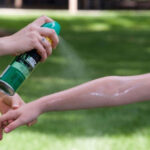 Choosing Bug Spray for Succulents: Safety and Effectiveness
Choosing Bug Spray for Succulents: Safety and Effectiveness- Manual Removal: For small infestations, you can use a cotton swab dipped in rubbing alcohol to carefully remove the white bugs from the affected areas of your succulents. Make sure to dispose of the bugs properly to prevent reinfestation.
- Neem Oil: Neem oil is a natural insecticide that can be effective against a variety of pests, including white bugs. Dilute neem oil with water according to the instructions and spray it onto the affected plants. Repeat the treatment every few days until the infestation is under control.
- Insecticidal Soap: Insecticidal soap is another option for treating white bugs on succulents. Apply the soap solution to the affected areas of the plants, ensuring complete coverage. Leave it on for a few minutes, then rinse it off with water. Repeat the treatment as needed.
- Isolate Infested Plants: If you have multiple succulents, it is crucial to isolate the infested plants from the healthy ones. This will prevent the bugs from spreading and infesting other plants.
- Maintain Proper Plant Care: Keeping your succulents healthy and strong is crucial in preventing and combating pest infestations. Make sure your plants are getting the right amount of sunlight, water, and well-draining soil. Avoid overwatering, as this can create conditions that attract pests.
By following these steps and regularly inspecting your succulent plants, you can effectively identify and treat common white bugs. Remember, early detection and prompt action are key in preventing widespread infestations and keeping your succulents thriving.
Apply a natural insecticidal soap to your succulent plants to kill white bugs
When it comes to caring for your succulent plants, it's important to be vigilant for any signs of pest infestation. One common pest that can wreak havoc on your beloved succulents is the presence of white bugs. These tiny creatures, often referred to as mealybugs or whiteflies, can quickly multiply and cause damage to the leaves and stems of your plants if left untreated.
To effectively treat and eliminate these white bugs, one natural and eco-friendly method you can employ is the use of insecticidal soap. This gentle yet effective solution is made from natural ingredients and can be easily applied to your succulent plants.
The benefits of using insecticidal soap
There are several benefits to using insecticidal soap to combat white bugs in your succulent plants. Firstly, it is non-toxic and safe to use around children and pets, making it an ideal choice for those who prioritize the health and well-being of their loved ones. Additionally, it is an environmentally friendly option that does not harm beneficial insects or the overall ecosystem of your garden.
Insecticidal soap works by suffocating and dehydrating the white bugs, ultimately leading to their demise. It is also effective in eliminating their eggs, preventing further infestation. By regularly applying insecticidal soap to your succulents, you can keep these pesky white bugs at bay and ensure the continued health and beauty of your plants.
How to apply insecticidal soap to your succulent plants
- First, ensure that your succulent plants are dry and not under direct sunlight.
- Mix the insecticidal soap solution according to the instructions provided on the product label.
- Using a spray bottle, apply the solution generously to all parts of the affected succulents, including the undersides of leaves and along the stems.
- Allow the soap to sit on the plants for the recommended amount of time specified on the product label.
- Gently rinse off the soap residue using lukewarm water, being careful not to damage the plants.
- Repeat this process every 7-10 days until the white bugs are completely eradicated.
Note: It is important to thoroughly read and follow the instructions provided on the insecticidal soap product label to ensure its safe and effective use. Different brands may have varying application methods and dilution ratios, so it's crucial to adhere to the specific guidelines provided.
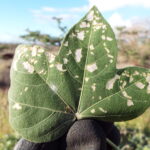 Understanding Leaf Loss in Succulents: Causes and Solutions
Understanding Leaf Loss in Succulents: Causes and SolutionsBy taking proactive measures and regularly applying insecticidal soap to your succulent plants, you can effectively eliminate white bugs and prevent further damage. Remember to maintain good hygiene practices, such as regularly inspecting and cleaning your plants, to minimize the risk of future infestations. With proper care, your succulents will thrive and remain beautiful for years to come.
Consider introducing beneficial insects, such as ladybugs, to your succulent plants to control white bug populations
When it comes to taking care of your succulent plants, one common problem that many gardeners encounter is the presence of white bugs. These tiny pests can wreak havoc on your plants, causing damage to the leaves and even inhibiting their growth. Fortunately, there are several methods you can employ to identify and treat these common white bugs.
Identifying White Bugs
Before you can effectively treat white bugs on your succulent plants, it is important to correctly identify the type of pest you are dealing with. Some of the most common white bugs found on succulents include:
- Mealybugs: These small, soft-bodied insects are covered in a white, cotton-like substance and usually gather in clusters on the leaves and stems of your plants.
- Whiteflies: These tiny, winged insects are often found in large numbers on the undersides of leaves. They are typically white in color and can be easily disturbed when you touch the plant.
- Aphids: These small, pear-shaped insects can be white, yellow, green, or black. They tend to congregate on the new growth of your succulents.
By closely examining your plants and identifying the specific type of white bug infestation, you will be better equipped to choose the most effective treatment method.
Treating White Bugs
There are several treatment options available to control and eliminate white bugs from your succulent plants. Here are some effective methods:
- Natural predators: Consider introducing beneficial insects, such as ladybugs or lacewings, to your garden. These natural predators feed on white bugs and can help control their population.
- Isopropyl alcohol solution: Mix a solution of 70% isopropyl alcohol and water and spray it directly on the affected areas of your plants. This will effectively kill the white bugs.
- Neem oil: Dilute neem oil in water according to the instructions on the label and spray it on your succulents. Neem oil acts as a natural insecticide and can help eliminate white bugs.
It is important to note that prevention is key when it comes to white bugs. Regularly inspect your succulent plants for any signs of infestation and take immediate action to prevent the pests from spreading. Additionally, maintaining proper plant care, such as providing adequate sunlight and avoiding overwatering, can help keep your succulents healthy and less susceptible to white bug attacks.
 Is My Succulent Infested with Pests? Signs of White Web Infection
Is My Succulent Infested with Pests? Signs of White Web InfectionBy promptly identifying and treating white bug infestations, you can ensure the health and vitality of your succulent plants. Remember to always follow the instructions on any treatment products and consult with a professional if the infestation persists or worsens.
Avoid overwatering your succulent plants, as this can create favorable conditions for white bugs to thrive
Identifying Common White Bugs in Succulent Plants
When it comes to succulent plants, one common issue that many gardeners encounter is the presence of white bugs. These tiny pests can cause significant damage to your beloved succulents if left untreated. Therefore, it is crucial to be able to identify them accurately.
1. Mealybugs: One of the most common white bugs found in succulent plants is mealybugs. These insects are usually covered in a white, powdery substance, resembling cotton. They tend to gather in clusters, especially in the nooks and crannies of your succulent leaves.
2. Whiteflies: Another troublesome white bug is the whitefly. These tiny insects have a powdery appearance and are often found in large numbers on the undersides of succulent leaves. They can cause damage by sucking out the plant's sap, leading to yellowing and wilting of the leaves.
3. Scale insects: Scale insects are another common white bug that infests succulent plants. They appear as small, round bumps or scales on the leaves and stems. These pests can weaken the plant by feeding on its sap and creating a sticky residue known as honeydew, which attracts ants.
Treating White Bugs in Succulent Plants
Once you have identified the presence of white bugs in your succulent plants, it is crucial to take immediate action to prevent further damage. Here are some effective treatment methods:
 Causes of Red Tips on Succulent Plants: A Comprehensive Guide
Causes of Red Tips on Succulent Plants: A Comprehensive Guide- Manual Removal: For a small infestation, manually removing the bugs can be an effective method. Use a cotton swab dipped in rubbing alcohol to gently wipe off the pests.
- Neem Oil: Neem oil is a natural insecticide that can be used to treat white bugs. Dilute the neem oil according to the instructions and spray it on the affected areas of the succulent plants.
- Insecticidal Soap: Insecticidal soap is another safe and effective treatment option. Spray the soap directly on the bugs, ensuring thorough coverage. Repeat the application as necessary.
- Biological Control: Introducing natural predators, such as ladybugs or lacewings, can help control the population of white bugs in your succulent plants.
Remember to closely monitor your succulent plants after treatment and continue with preventive measures to avoid future infestations. Regularly inspect your plants, avoid overwatering, and maintain proper ventilation to create unfavorable conditions for these white bugs to thrive.
Keep your succulent plants in a well-ventilated area to discourage white bug infestations
When it comes to keeping your succulent plants healthy, one of the most common issues you may encounter is a white bug infestation. These pesky insects can wreak havoc on your plants if left untreated. Thankfully, there are ways to identify and effectively treat these common white bugs.
Identifying White Bugs in Succulent Plants
Before you can effectively treat the white bugs in your succulent plants, it's important to correctly identify the type of insect you're dealing with. Here are some common white bugs you may find:
- Mealybugs: These tiny, cotton-like insects are a common pest in succulent plants. They can be found on the leaves, stems, and even in the soil.
- Whiteflies: These small, winged insects resemble tiny moths. They typically gather on the undersides of leaves and can quickly multiply.
- Aphids: While aphids come in various colors, they can also appear as small, white bugs on succulent plants. They often cluster around new growth and flower buds.
Once you have correctly identified the type of white bug infesting your succulent plants, you can proceed with the appropriate treatment method.
Treating White Bug Infestations in Succulent Plants
There are several methods you can use to treat white bug infestations in your succulent plants. Here are some effective options:
- Manual Removal: For small infestations, you can manually remove the white bugs using a cotton swab dipped in rubbing alcohol. Gently dab the insects to eliminate them.
- Neem Oil: Neem oil is a natural insecticide that can be used to control white bugs. Dilute the oil according to the instructions and spray it on the affected areas of your succulent plants.
- Insecticidal Soap: Insecticidal soaps are specifically formulated to kill insects while being safe for plants. Apply the soap according to the instructions to eliminate the white bugs.
- Biological Control: Introducing natural predators, such as ladybugs or lacewings, can help control white bug populations in your succulent plants.
Remember to regularly inspect your succulent plants for any signs of white bug infestations. Early detection and treatment can prevent these pests from causing significant damage to your beloved plants.
 Understanding and Treating the White Substance on Succulents
Understanding and Treating the White Substance on SucculentsRegularly clean and sterilize your gardening tools to prevent the spread of white bugs to your succulent plants
One of the best ways to prevent the spread of white bugs to your succulent plants is by regularly cleaning and sterilizing your gardening tools. These bugs can easily hitch a ride on your tools and find their way to your precious succulents.
Start by carefully inspecting your gardening tools for any signs of infestation. Look for tiny white bugs or their eggs on the handles, blades, or any other crevices. If you spot any, it's crucial to clean and sterilize your tools right away to prevent the bugs from spreading.
Cleaning your gardening tools
Here's a step-by-step guide on how to effectively clean your gardening tools:
- Gather the necessary supplies: You'll need warm water, mild soap or detergent, a scrub brush, and a clean cloth or towel.
- Remove any visible debris: Use a brush or cloth to remove any dirt, mud, or plant material from your tools.
- Prepare a soapy water solution: Fill a bucket or basin with warm water and add a few drops of mild soap or detergent. Mix it well to create a soapy solution.
- Scrub your tools: Dip the scrub brush into the soapy water and scrub each tool thoroughly. Pay extra attention to the areas where bugs or eggs might be hiding.
- Rinse with clean water: After scrubbing, rinse your tools with clean water to remove any soap residue.
- Dry your tools: Use a clean cloth or towel to dry your gardening tools thoroughly. Ensure that there is no moisture left, as it can lead to rust or corrosion.
Sterilizing your gardening tools
After cleaning your tools, it's important to take an additional step and sterilize them to kill any remaining bugs or eggs. Sterilization will help ensure that your tools are completely bug-free before using them on your succulents.
Here are some methods you can use to sterilize your gardening tools:
- Boiling water: Place your tools in a pot of boiling water for about 10 minutes. This will help kill any bugs or eggs present on the surface.
- Rubbing alcohol: Wipe down your tools with a cloth soaked in rubbing alcohol. This method is particularly effective in killing bugs and disinfecting your tools.
- Bleach solution: Create a solution of 1 part bleach to 9 parts water. Soak your tools in this solution for about 10 minutes, then rinse them thoroughly with clean water.
Remember to wear protective gloves and follow the instructions for each sterilization method to ensure your safety.
 Causes of Blue Discoloration in Succulent Leaves
Causes of Blue Discoloration in Succulent LeavesBy regularly cleaning and sterilizing your gardening tools, you can greatly reduce the risk of introducing white bugs to your succulent plants. This simple practice will help keep your succulents healthy and thriving.
Frequently Asked Questions
1. What are the common white bugs found in succulent plants?
The common white bugs found in succulent plants are mealybugs, whiteflies, spider mites, and aphids.
2. How can I identify these white bugs in my succulent plants?
Mealybugs appear as small, cotton-like masses, whiteflies are tiny white flying insects, spider mites create fine webs, and aphids are small pear-shaped insects.
3. What damage do these white bugs cause to succulent plants?
These white bugs can cause stunted growth, yellowing leaves, leaf drop, distorted foliage, and overall decline in the health of succulent plants.
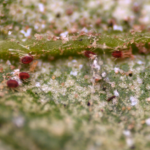 Eliminating White Webs on Succulents: A Comprehensive Guide
Eliminating White Webs on Succulents: A Comprehensive Guide4. How can I treat white bugs in my succulent plants?
Treating white bugs in succulent plants involves methods like using insecticidal soap or oil sprays, wiping them off with alcohol-soaked cotton swabs, or introducing beneficial insects like ladybugs or lacewings.
If you want to read more articles similar to Identifying & Treating Common White Bugs in Succulent Plants, you can visit the Pests and Diseases category.

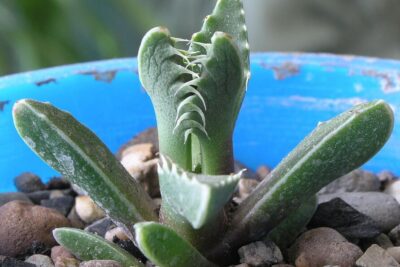

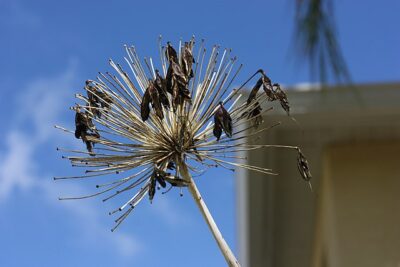
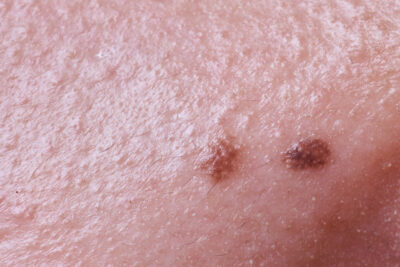
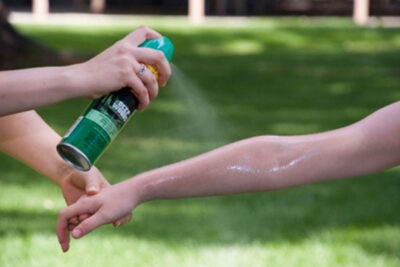
You Must Read